As a rule, problems of this kind are detected when trying to boot from a specific Flash drive. If your computing device does not see the flash drive in the BIOS, then most likely you have not made the necessary changes to the basic system of the computer, or your removable storage device is simply not bootable. However, let's take a closer look at this confusing situation: “the flash drive is inserted into the PC, but does not work properly.”
Is your USB Flash drive working?
Of course, you can suffer for a long time and conduct unsuccessful experiments in the BIOS system itself, which will ultimately turn out to be a waste of your valuable time. Because the flash drive may simply be inoperable. To verify the opposite, try enlisting the help of a testing device - insert the “capricious” flash drive into another PC.

And in general, check whether the (seemingly faulty when you boot the PC) storage device is visible in Windows environment. That is, is USB memory detected in the operating system itself? If not, then the Flash Drive needs to be repaired. Perhaps everything will be resolved after using a special software tool, for example, a proprietary flash drive recovery utility from its manufacturer.
Priority BIOS settings or what, where and how...
- Insert the flash drive into the USB connector of your PC.
- Restart your computer.
- Enter the BIOS using the corresponding button on the keyboard (for those who don’t know how to do this -).
- Depending on the version of the basic microsystem, the name of the section in which the connected flash drive is displayed may be different from the “BOOT” tab discussed below. And yet, be guided by the abbreviation “USB” when searching for the required partition in the BIOS.
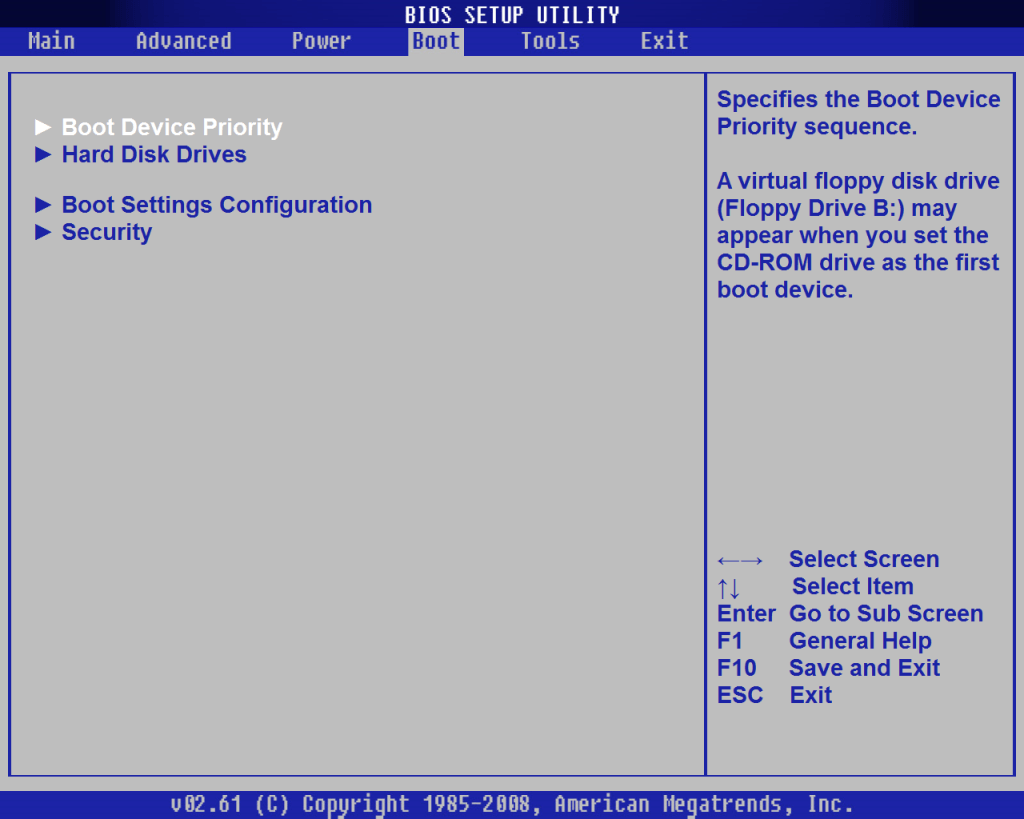
- Set to boot from a flash drive.
- Also check if the USB hardware controller is disabled.
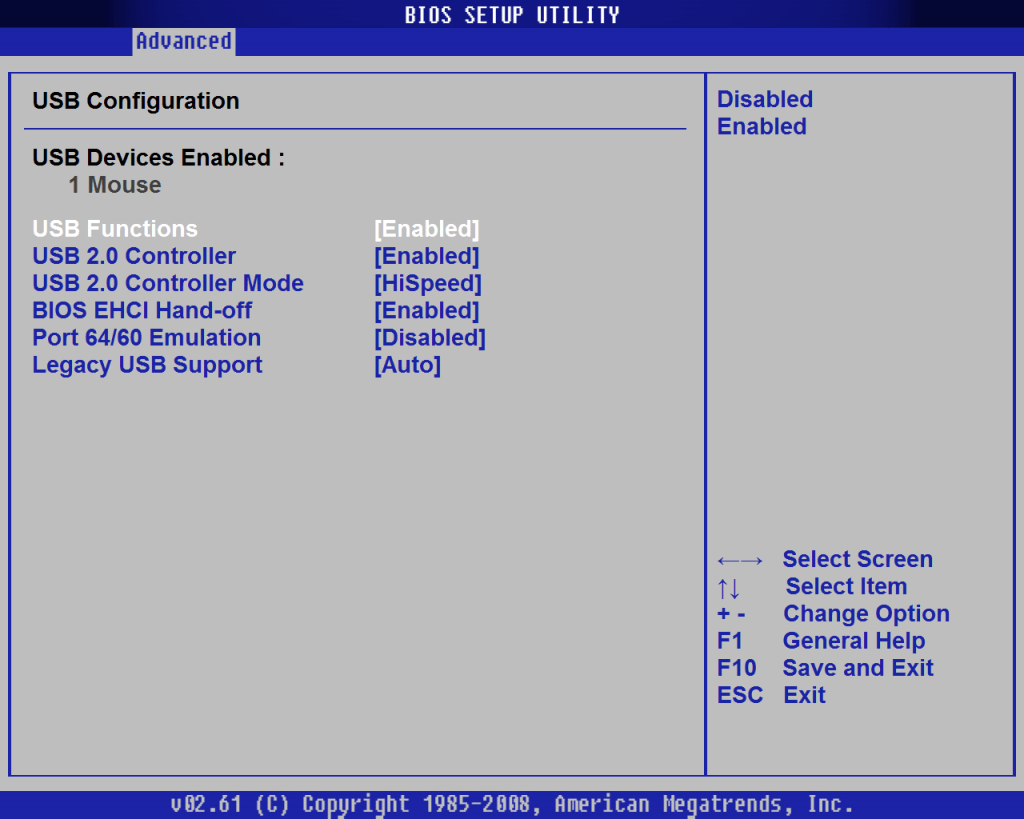
- Save and reboot the computer.

Great if USB Flash Drive was detected and the PC switched to boot mode from the flash drive. Otherwise, move on to the next section of this article.
Boot properties of USB flash drive
Let's say you want to install an operating system whose distribution is stored on a removable storage device. However, in order for a flash drive to be defined as a bootable drive, it must be configured as such. In other words, in the process of recording installation Windows files necessary use special utility, for example, “Rufus” (to download, click here ). Only in this case the flash drive will truly become bootable.
Storage device hardware incompatibility
In some situations, the system BIOS does not see the flash drive due to the outdated interface of the memory device itself. Make sure your USB drive is not an "ancient" 1.1 drive. However, new flash drives with 3.0 technological characteristics may also not be perceived by outdated computer systems.

So, detailed characteristics Your storage device can be found on the official technical support website - enter the model of the flash drive and read the information you are interested in. By the way, this action can help in solving problematic situations related to any malfunction of your USB devices(meaning the presence of a specific recovery utility on the site).
Updating the system BIOS - as a solution to the “invisible” USB problem
Sometimes it is advisable to carry out the process of software upgrading the BIOS of a microsystem. How to do this is described in detail here. However, in modern computers this operation produced by a fairly simple method.
- Visit your motherboard's technical support site.
- Download new version BIOS(a).
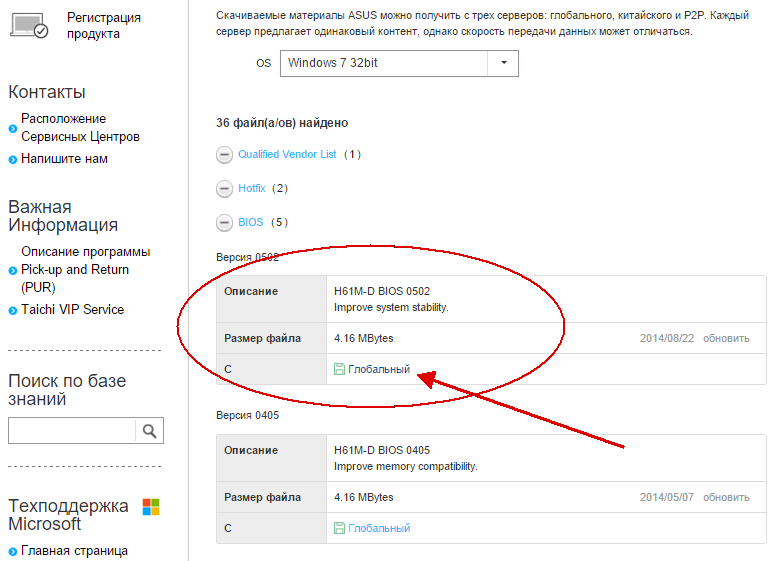
- Using a special flasher, flash the BIOS of your computer.
However, before you begin the albeit not difficult, but still very responsible operation of “upgrading the version of the basic PC microsystem,” carefully and in detail study background information about a properly implemented update process (this may be an invaluable help for you - go to ).
Bootable USB incompatibility of outdated computer systems - there is a solution!
Let's call such computers “exotic”. However, if you need to give your old computer the “boot from USB drive” properties, then follow the instructions below.
- Use this link - https://www.plop.at/en/bootmanager/download.html.
- After you have downloaded “Plop Boot Manager”, burn it to a CD.
- Set the BIOS to prioritize booting from the optical drive.

- Next, after the “Plop” workspace of the utility is displayed on the screen, insert USB storage into the appropriate connector (preferably the main one, which is located at the back system unit PC).

- Select USB in the bootloader window.
Now your “old man” can use a flash drive as a boot drive.
Summing up
So, the author of this article is confident that after you have read the material in the presented article, you will certainly succeed. And yet, I would like to note one important fact: most users make mistakes only because they misunderstand the problem and resort to sometimes meaningless advice from “kind Internet GURU”. At the same time, exposing your car to the critical danger of “complete failure.” Be wise when choosing one or another solution to your computer problems and your experience will always be productive!
Flash drives have now become an indispensable tool for storing and transferring information to a PC. Most users personal computers use flash drives for Windows installations or Ubuntu. This is due to the fact that you do not need to burn the image to disk, but rather install it directly from a flash drive.
In addition, now most laptop and computer manufacturers, such as Acer and Lenovo, produce desktop and laptop computers without optical drives, which further popularizes installing Windows from a bootable USB flash drive. When installed in this way, many users of laptops and desktop computers experience situations where the BIOS does not see bootable USB flash drive. In this article we will try to understand in detail how to write an image to a flash drive, and also understand the BIOS settings for correct installation Windows and Ubuntu.
If you are faced with the fact that your flash drive is not detected when you restart your PC, then the first thing you need to do is make sure that The flash drive is really bootable. The fact is that simply copying files to it is not enough.
Moreover, if you have an “absolutely working” bootable flash drive, since you have already installed the system from it many times, then we have to disappoint you: currently there are several types of boot systems and A flash drive that works on one PC will not work on another. To succeed in this case, the system must be rewritten differently.
Therefore, the main part of the article contains detailed instructions on correctly recording a bootable USB flash drive using various software. The following article contains recommendations for setting up different types BIOS.
Correctly creating a bootable USB flash drive for Windows
First of all, to create boot disk with Windows, you will need a flash drive with a capacity of 8 GB or higher. You may ask why such a volume is needed. The answer is simple, now the installation files of modern operating systems are more than 2–4 GB in size. In these examples, we will look at creating a bootable flash drive on the following popular operating systems:
- Windows 7;
- Windows 8.1;
- Windows 10;
To create a bootable USB flash drive for Windows 7, you need to download a licensed image. You can download it on the official page www.microsoft.com/ru-ru/software-download/windows7. To write an image to a flash drive, you will need a proprietary utility Microsoft Windows USB/DVD Download Tool, which can be downloaded from www.microsoft.com/en-us/download/windows-usb-dvd-download-tool. After installing the utility, you can begin creating a bootable USB flash drive. After launching the utility, a window will appear in which you need to indicate where the image is located.
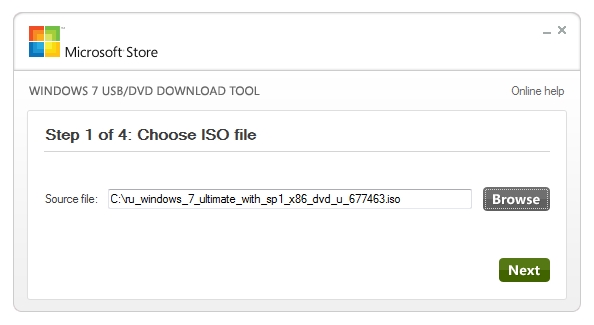
After clicking the Next button, you will be taken to the device selection window for recording the image.
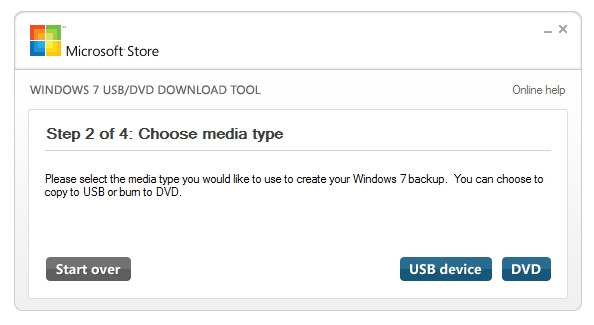
In this window you need to click the button USB device, after which you will proceed to selecting a flash drive.
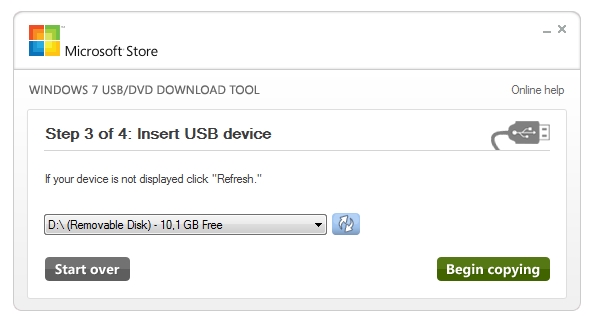
Having selected the required flash drive, click the Begin copying button. The copying process will begin installation files to a flash drive. Also be careful, as all previously stored files on the USB drive will be erased.
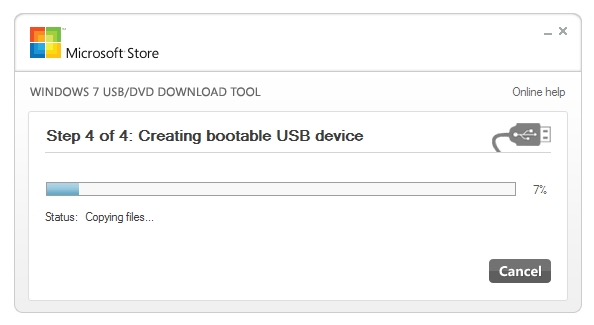
The inscription in the last window “ Status: Backup completed" will mean that your bootable USB flash drive is ready.
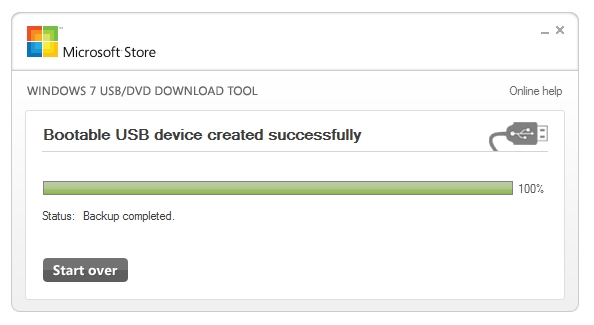
To install Windows 8.1 you need to download the official utility MediaCreationTool at http://windows.microsoft.com/en-us/windows-8/create-reset-refresh-media. After launching the utility, you will be taken to the OS version selection window, where you need to select the language, version and bitness operating system.
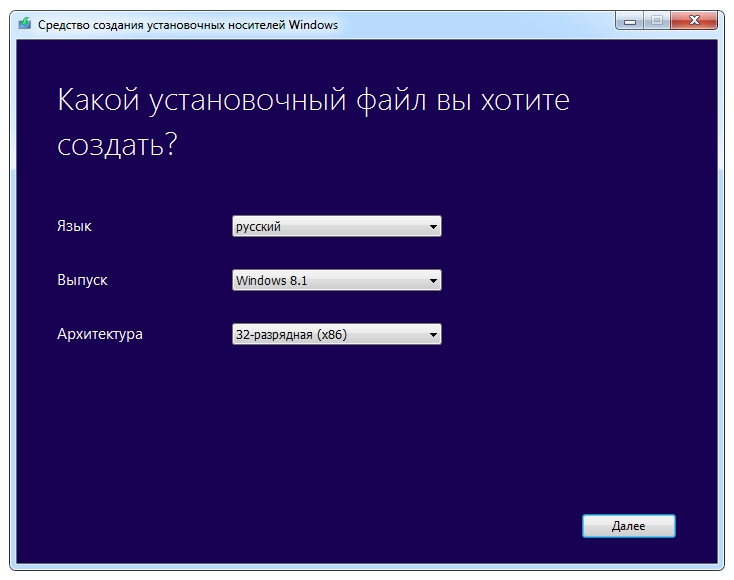
In the next step you need to select the device for Windows entries. In our case it is “ USB flash memory device»
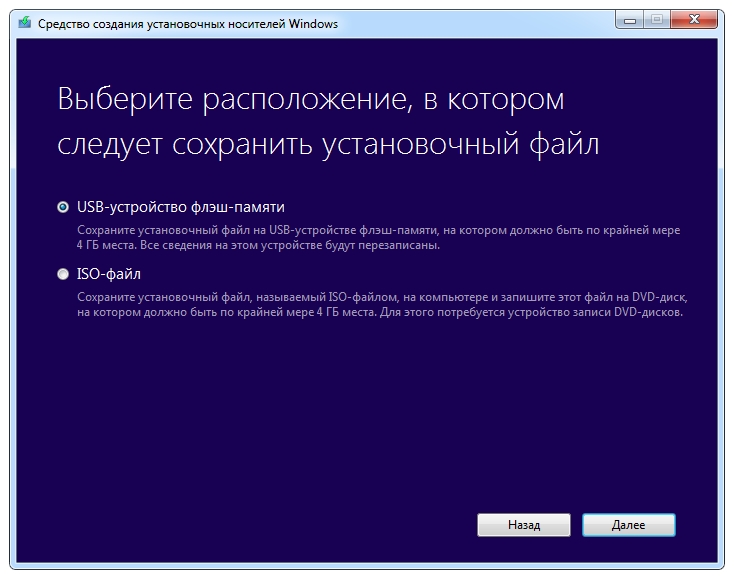
The next step will give you the opportunity to select a flash drive.
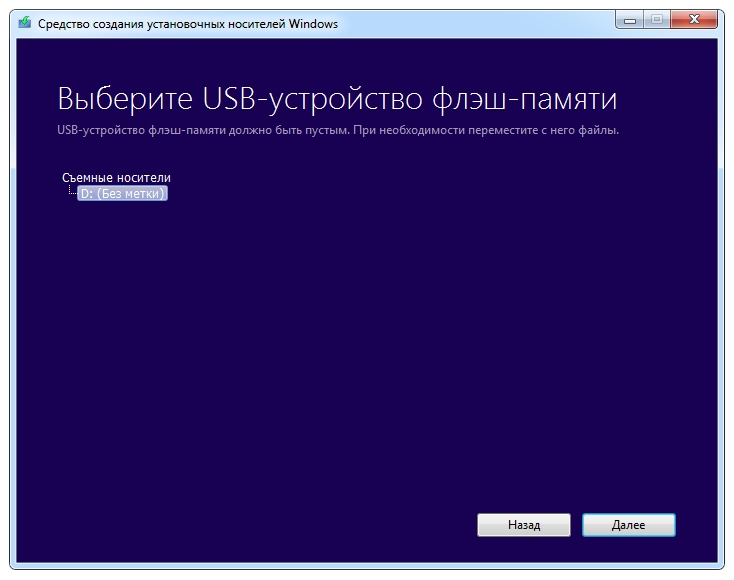
After this, the next step is to download and write files to the drive. Just like with the previous example, all data on the flash drive will be erased. 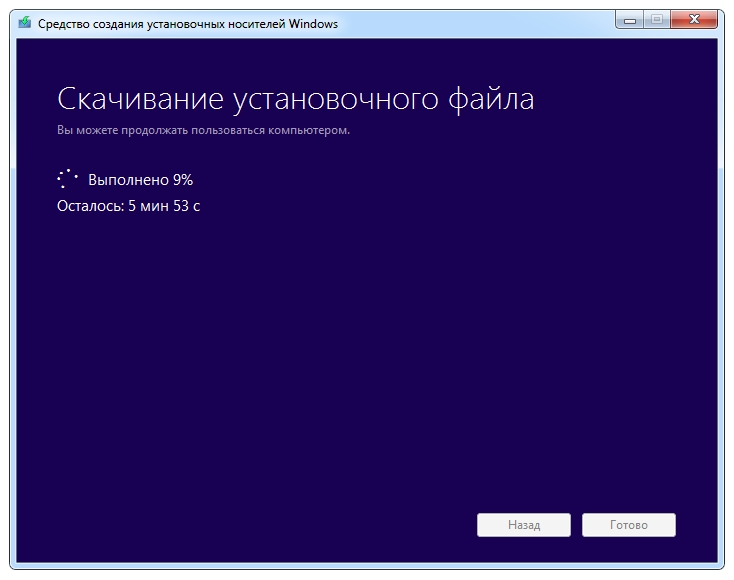
The last window will notify you that the installation drive is ready.
![]()
To make a bootable flash drive for Windows 10, you need to download the utility MediaCreationTool from this page: www.microsoft.com/ru-ru/software-download/windows10. If you run the utility on Windows 7 or 8, the program will offer you two options: update or create installation media. You need to choose the second option.
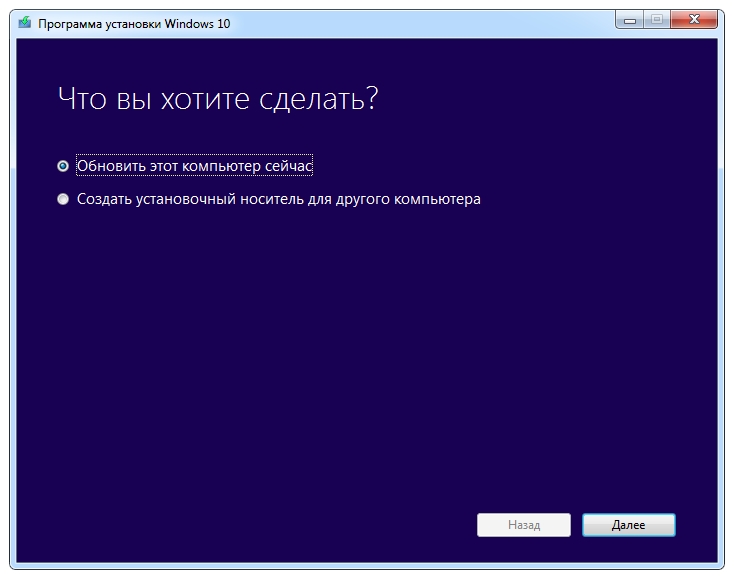
The step of creating a bootable drive will be similar to the example for Windows 8.1.
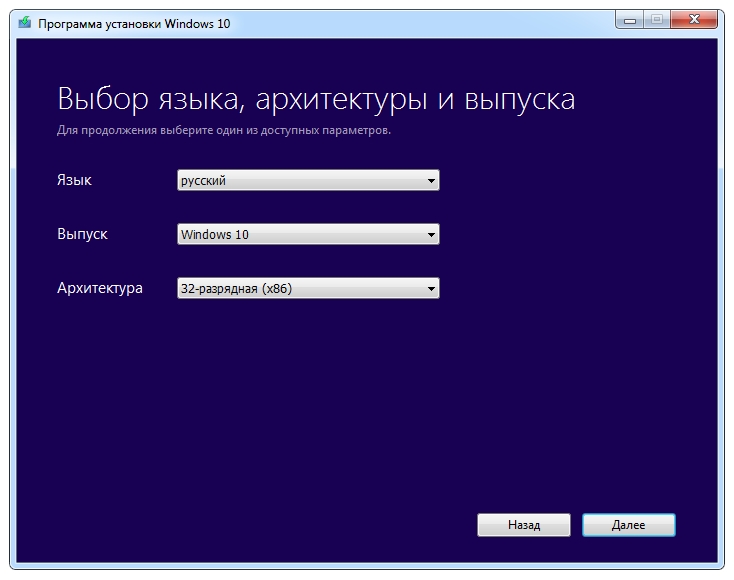
Correctly creating a bootable USB flash drive for Ubuntu 15
For Ubuntu 15, you need to download the UNetbootin utility from https://unetbootin.github.io. After launching the program, you need to select the options as in the figure below and click OK.

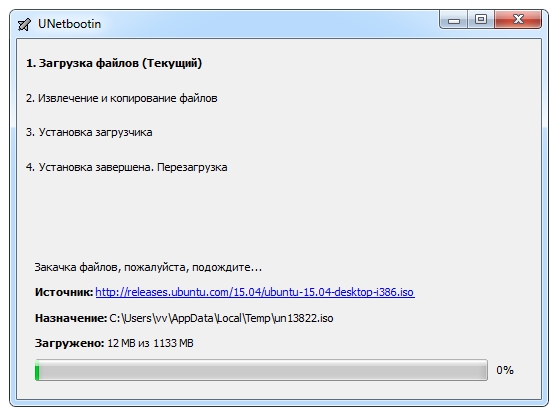
The final window will ask you to restart your computer or laptop and boot from the flash drive.
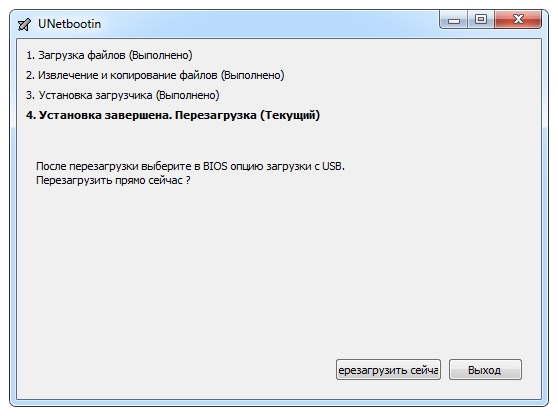
Setting up BIOS to boot from a USB drive
Let's look at an example UEFI boot BIOS from USB drive. For example, we will use the mother MSI board- A58M-E33, which has the latest version of UEFI BIOS. To enter UEFI settings Motherboard BIOS A58M-E33 board, necessary when starting a laptop or desktop computer press the F11 key. A boot menu will open in front of you, in which you need to select a flash drive, in this case it is “KingstonDataTraveler 2.0PMAP”.
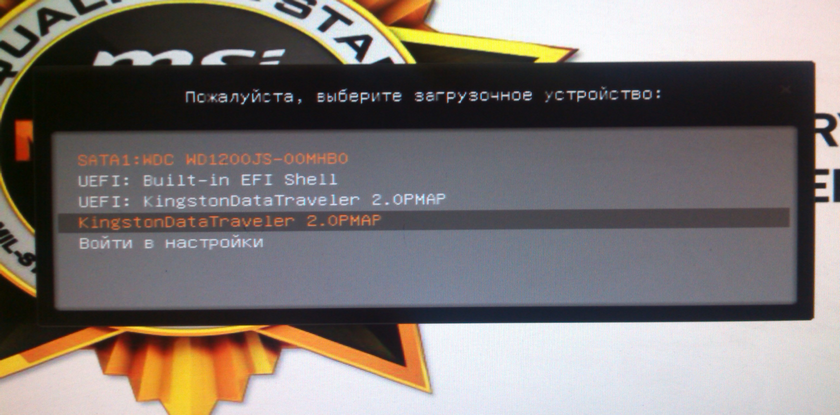
You can also set it in the options so that the flash drive boots immediately from the BIOS. To do this, press the Delete key when loading. You will be taken to the UEFI BIOS main menu.
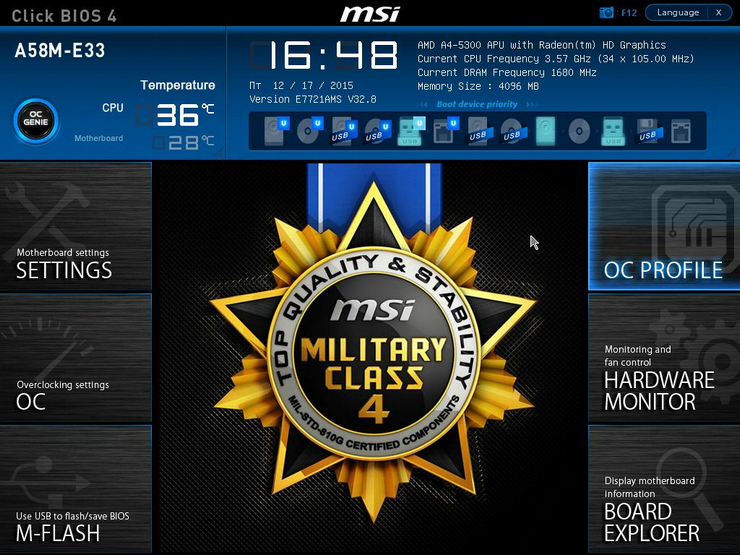
Then go to the menu " Settings\boot" and place the flash drive in the first place as shown in the picture below.
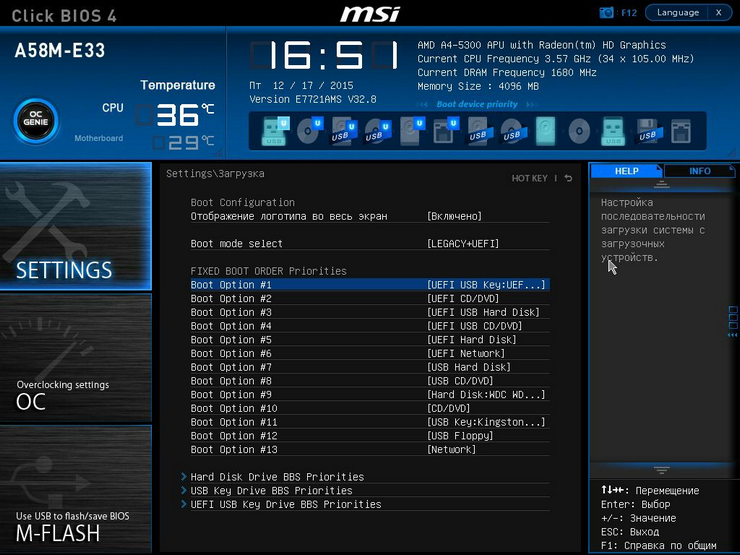
Now your system will boot from the selected flash device. But if your PC or laptop has UEFI and the system does not see the bootable USB flash drive, which means the image was written incorrectly, or “Safe boot” mode is enabled(how to fix it, see the section below “How to configure UEFI to...”).
Booting from a USB drive on older computers
On older BIOS versions, you can also boot from a USB drive. For example, to boot from an old Acer laptop, you need to press the F2 key at startup. Once in Laptop BIOS Acer, go to menu " BOOT».
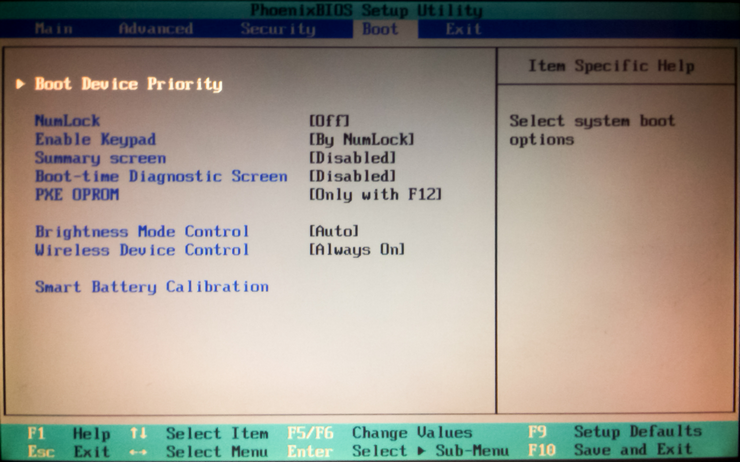
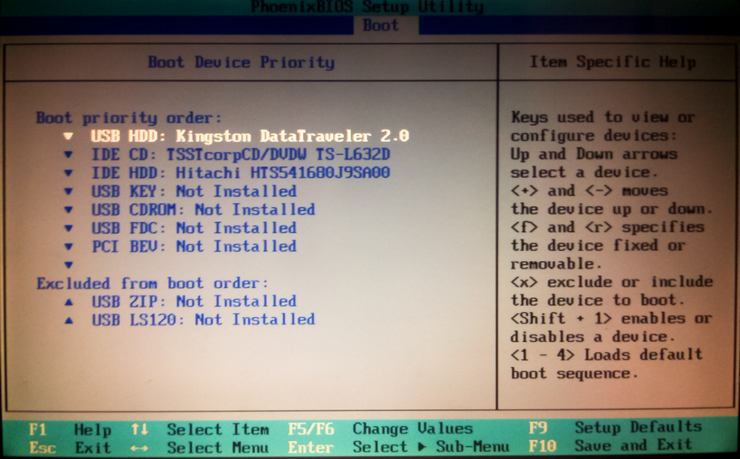
Now after saving, your Acer laptop will boot from a flash device. This configuration of the old BIOS is installed on most Acer laptops. Therefore, with other older Acer laptop models, the setup will be similar.
USB drive for UEFI computer
If you buy now new computer or laptop, then it will definitely support UEFI BIOS. There are many benefits to using the new UEFI BIOS, so the bootable flash drive must support UEFI systems.
If you create a bootable USB drive for Windows 7, 8.1 using MediaCreationTool, then the UEFI system will support it. And with the utility Windows USB/DVD Download Tool This option will not work for Windows 7.
Consider the option of creating installation flash drive with support for UEFI systems for Windows 7. To do this, download the program from https://rufus.akeo.ie Rufus. Before starting the program, insert the USB drive. After launching the Rufus utility, select Windows image 7. You can do this by clicking on the icon with DVD disc. The program window will look like this.
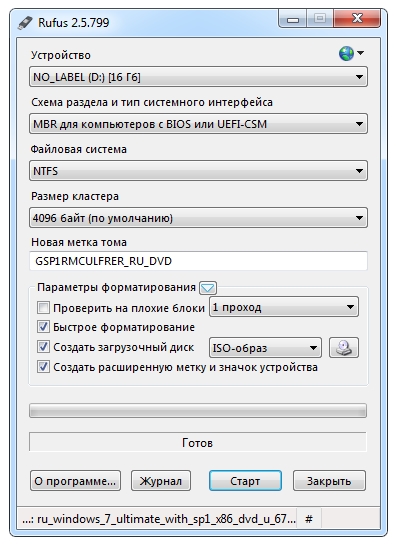
If all the points match, as shown in the figure, then feel free to press the Start button, after which file recording will begin.
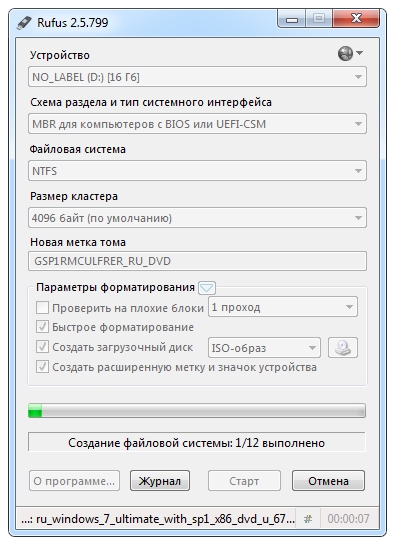
After recording the files, you can use the flash drive to install Windows on the UEFI system. Rufus can also be used for systems with a regular BIOS. A notable feature of the Rufus program is the fast speed of writing the image to the drive.
After reading this material, you will be able to create bootable flash drives for Windows and Linux-like operating systems. And you won’t have questions like: why is my flash drive not in the BIOS or why Windows doesn’t support the UEFI system.
How to configure UEFI so that the computer sees a bootable USB flash drive
There are some considerations for installing Windows 7 or XP on a PC running Windows 8 or 10. Latest versions(8 and 10) are configured for UEFI and GPT partition table, while the previous ones used MBR disk partition.
UEFI has a new feature " Safe boot", ensuring the safety of system booting. A new level of security blocks booting from external devices such as USB flash drives and CD drives.
Therefore, even if you make an exclusively correct bootable USB flash drive, it still will not appear in boot menu when you restart your PC or laptop.
To eliminate this reason, you can do the following:
- Make sure your USB bootable The flash drive is configured to work with UEFI (how to properly make such a flash drive was described above).
- Disable “Safe boot”, and change “Boot Mode” to “CSM/Legacy BIOS Mode”.
Working with bootloader settings requires experience; we do not recommend beginners to perform such actions. We also recommend that you save all important data first, as it may be lost.
To disable "Safe boot" follow these steps:
- Restart your computer or laptop and go into BIOS.
- Go to the page " BIOS Settings».
- In the BIOS security settings, set the option " Safe boot" to the meaning " Disable».
- Option " Boot Mode"translate to " CSM(Compability Support Mode)/Legacy BIOS" or " CSM Boot"- possible different options.
- Make sure USB is first in the boot sequence settings " Boot Order».
- Exit BIOS and save changes " Save and exit".
Video on the topic
Installation using Rufus
8 reasons why the computer does not see the flash drive
Do you know what is the most common question among users who first decided to install Windows from a flash drive?
People constantly ask why Bios doesn’t see the bootable USB flash drive. To which I usually answer, is it bootable? 😛
In this short note, I would like to dwell on the main issues that you need to go through if you have a similar problem...
1. Is the bootable USB flash drive written correctly?
The most common thing is that the flash drive is written incorrectly.
Most often, users simply copy files from a disk to a flash drive... And, by the way, some say that it works for them. It’s possible, but you shouldn’t do this, especially since this option won’t work for most...
It's best to take advantage special program to burn a bootable USB flash drive. We have already gone through the most popular utilities in detail.
Personally, I like using the program most of all: it can even record Windows 7 or Windows 8 on a flash drive or external HDD. In addition, for example, the recommended utility “Windows 7 USB/DVD Download Toll” allows you to burn an image only to an 8 GB flash drive (at least for me), but UltraISO can easily burn an image to 4 GB!
To burn a flash drive, take 4 steps:
1) Download or create it from the OS you want to install. Then open this image in UltraISO (you can press the “Cntrl + O” button combination).
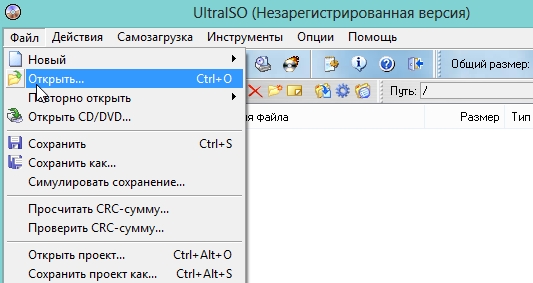
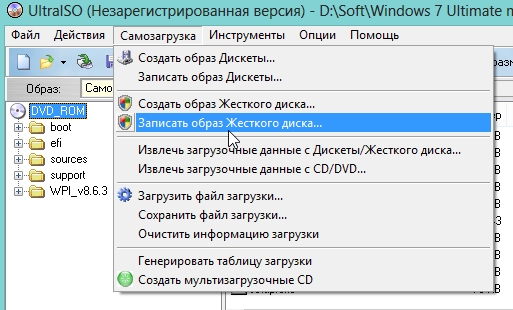
3) The settings window should appear. There are several important points to note here:
In the Disk Drive column, select exactly the flash drive on which you want to write the image;
Select the USB HDD option in the recording method column (without any pluses, dots, etc.);
Hide Boot Partition - select the no tab.
After that, click on the recording function.
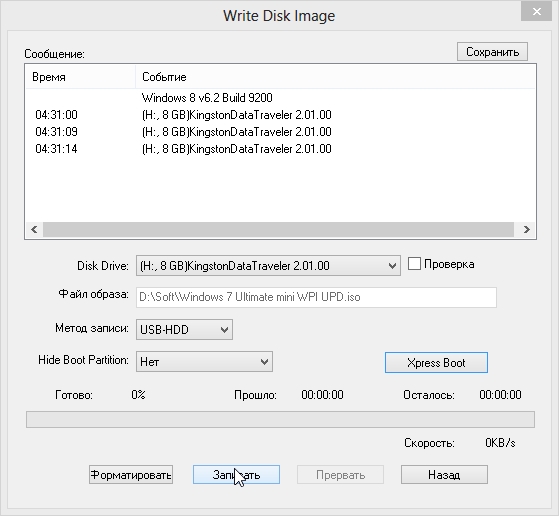
4) Important! When recording, all data on the flash drive will be deleted! Which, by the way, is what the program will warn you about.

After the message about successful recording of the bootable USB flash drive, you can begin setting up the BIOS.
2. Is the BIOS configured correctly, is there a function to support a bootable flash drive?
If the flash drive is written correctly (for example, as described just above in the previous step), most likely you simply configured the Bios incorrectly. Moreover, in some BIOS versions there are several boot options: USB-CD-Rom, USB FDD, USB HDD, etc.
Booting the computer from external storage may be required to reinstall or restore the operating system in case of any failures or the appearance of virus software.
If the BIOS does not see the flash drive
The BIOS may not see the flash drive in several cases: USB drive failure, incorrect entry bootable flash drive or simply not produced correct setting BIOS or UEFI.
The flash drive is written incorrectly
Incorrect boot drive recording is one of the most common causes of problems when trying to boot from a memory card. For recording better use program " Rufus", it will allow you to load absolutely any operating system onto a flash drive, which is something that most other programs have problems with.
Instructions for preparing a flash drive via Rufus:
Checking booting from a flash drive
If the flash drive is not detected when you turn on or restart the computer, you need to set the correct one in the BIOS. boot priority.
After entering the BIOS, you will need to go to the “ Boot»; 
Next you should go to “ Boot Device Priority"(some motherboards may have a different menu name); 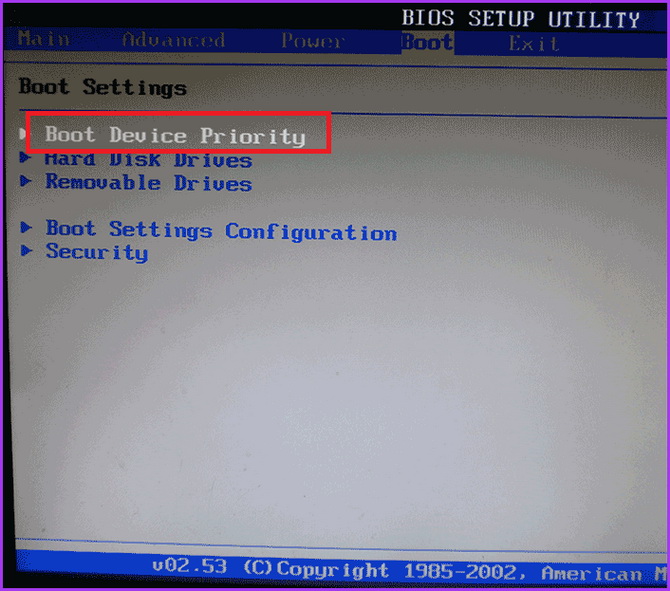
In the window that appears choose the required storage device. 
Methods for booting from a flash drive to UEFI
When working with UEFI, everything is even simpler, although in some cases unexpected problems may arise. Methods for launching from a flash drive under UEFI will be shown using the example of an Asus motherboard:
If you need your computer constantly booted from an external drive, please indicate required device V download priority. After this, the computer will turn on from the flash drive until you remove it or change the boot priority again; 
For single boot from flash drive worth opening boot menu and choose required disk
. After restarting the computer, loading will occur with hard drive in normal mode; 
If all else fails
Old operating systems (Windows 7 and older), as well as some Linux distributions don't support boot to UEFI. To correct the situation you will need turn on mode for working with unsupported operating systems. You can do this in the following way:
First you need to go to additional settings
;
In point " OS type"should select " Other OS" After this, all operating systems will boot normally, both the newest (Windows 10) and outdated ones (Windows XP, 7). 
Why the BIOS or computer does not see the flash drive - video
Every System Administrator should know how boot computer from USB flash drive. Most often, this skill is needed when installing an operating system. After all, the Windows distribution does not have to be located on a CD. And, for example, it won’t even be possible to install Windows on a netbook any other way, because... it usually does not have a disk drive.
Today I will tell you how to set boot from a flash drive in the BIOS of various manufacturers. Regardless of which version you have, the procedure will be as follows:
1. We insert our bootable USB flash drive into the USB connector of the computer. It is advisable to insert it into the port located directly on motherboard, i.e. from the back of the system unit.
2. Turn on the computer and press the key Delete(or F2) to get into the BIOS. Depending on the manufacturer and BIOS version, other keys (Esc, F1, Tab) may be used, so you need to carefully watch the prompts on the screen.
In Bios, we can navigate through tabs and lines only using the keyboard.
Next I will describe in detail this process using the example of different BIOS versions.
Settings Award Bios to boot from a flash drive
Award Bios:![]() First, let's check if the USB controller is enabled. Let's go to “Integrated Peripherals”. Use the arrow on the keyboard to move down to the “USB Controller” item. Press the “Enter” key and select “Enable” in the window that appears (also using “Enter”). Opposite “USB Controller 2.0” there should also be “Enable”.
First, let's check if the USB controller is enabled. Let's go to “Integrated Peripherals”. Use the arrow on the keyboard to move down to the “USB Controller” item. Press the “Enter” key and select “Enable” in the window that appears (also using “Enter”). Opposite “USB Controller 2.0” there should also be “Enable”.  Exit this tab by pressing “Esc”.
Exit this tab by pressing “Esc”.
Then go to “Advanced BIOS Features” – “Hard Disk Boot Priority”. Now in my example the hard drive comes first, but the flash drive should be there.  We stand on the line with the name of our flash drive (Patriot Memory) and raise it to the very top using the “+” key on the keyboard.
We stand on the line with the name of our flash drive (Patriot Memory) and raise it to the very top using the “+” key on the keyboard.  We leave here by pressing “Esc”.
We leave here by pressing “Esc”.
Now on the line “First Boot Device” press “Enter”. We selected “CD-ROM”, but we need to set “USB-HDD” (if suddenly loading from a flash drive does not work, come back here and try setting “USB-FDD”). Let the second device be “Hard Disk”.  Exit this tab by pressing Esc.
Exit this tab by pressing Esc.
Now exit the BIOS, saving the changes. To do this, click “Save & Exit Setup” – press the “Y” – “Enter” key. 
Settings AMI Bios to boot from a flash drive
If, after entering Bios, you see such a screen, it means you have AMI Bios: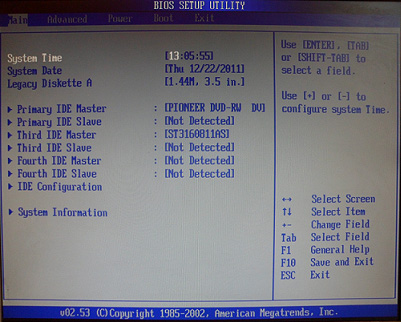 First, let's check if the USB controller is enabled. Go to the “Advanced” – “USB Configuration” tab.
First, let's check if the USB controller is enabled. Go to the “Advanced” – “USB Configuration” tab.  Opposite the items “USB Function” and “USB 2.0 Controller” should be “Enabled”.
Opposite the items “USB Function” and “USB 2.0 Controller” should be “Enabled”. 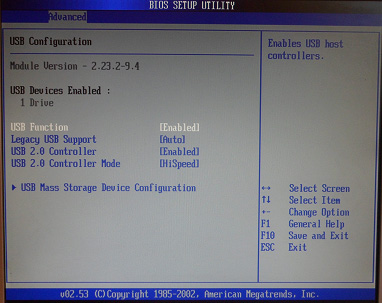 If this is not the case, go to this line and press the “Enter” key. From the list that appears, select “Enabled” (also using “Enter”).
If this is not the case, go to this line and press the “Enter” key. From the list that appears, select “Enabled” (also using “Enter”).
Then exit this tab by pressing “Esc”.
Go to the “Boot” – “Hard Disk Drives” tab.  Now my hard drive is in first place, but I need to put a flash drive here. We go to the first line, press “Enter” and in the window that appears, select our Patriot Memory flash drive.
Now my hard drive is in first place, but I need to put a flash drive here. We go to the first line, press “Enter” and in the window that appears, select our Patriot Memory flash drive.  It should be like this:
It should be like this: 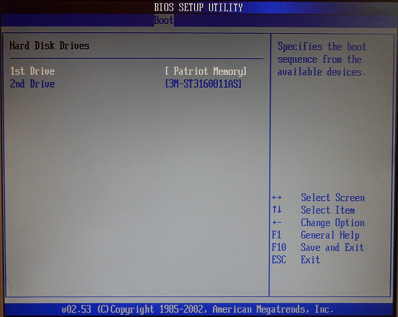 We leave here via “Esc”.
We leave here via “Esc”.
Select “Boot Device Priority”. Here, the first boot device must be a flash drive.  Press Esc.
Press Esc.
Then we exit the Bios, saving all the settings made. To do this, go to “Exit” – “Exit & Save Changes” – “OK”. 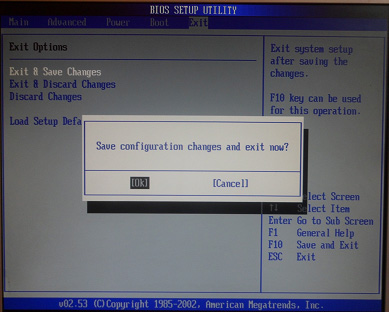
Setting up Phoenix-Award Bios to boot from a flash drive
If, after entering Bios, you see such a screen, it means you have Phoenix-Award BIOS: First, let's check if the USB controller is enabled. Go to the “Peripherals” tab – opposite the “USB Controller” and “USB 2.0 Controller” items there should be “Enabled”.
First, let's check if the USB controller is enabled. Go to the “Peripherals” tab – opposite the “USB Controller” and “USB 2.0 Controller” items there should be “Enabled”. 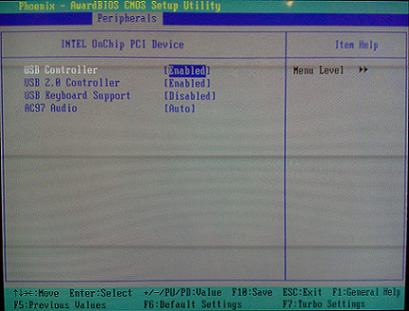 Then go to the “Advanced” tab and opposite “First Boot Device” set “USB-HDD”.
Then go to the “Advanced” tab and opposite “First Boot Device” set “USB-HDD”. 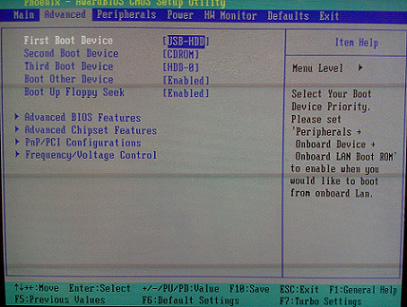 After that, exit the Bios, saving the changes. To do this, go to “Exit” – “Save & Exit Setup” – press the “Y” – “Enter” key
After that, exit the Bios, saving the changes. To do this, go to “Exit” – “Save & Exit Setup” – press the “Y” – “Enter” key 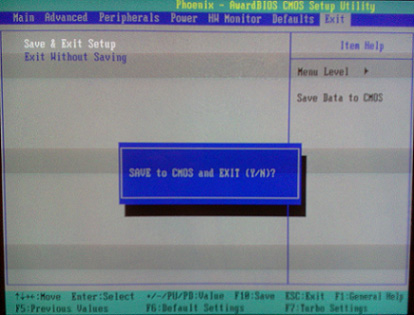 That's practically everything you need to know in order to boot from a flash drive. In my article, I described the process of setting up the Bios most popular versions: Award And AMI. The third example presents Phoenix-Award Bios, which is much less common.
That's practically everything you need to know in order to boot from a flash drive. In my article, I described the process of setting up the Bios most popular versions: Award And AMI. The third example presents Phoenix-Award Bios, which is much less common.
IN different versions The BIOS procedure described may be slightly different. But the main thing is that you understand the principle of setting itself.
By the way, I would also like to add: in order to choose which device to boot your computer from, it is not necessary to change the settings in the BIOS. You can immediately call up a special menu after turning on the computer to select boot devices (this can be done by pressing the F8, F10, F11, F12 or Esc key). In order not to guess with the keys, look carefully at the monitor immediately after turning it on. We need to have time to see an inscription like this: “Press Esc to selest boot device.” In my case, it was necessary to press “Esc”.  If on your computer BIOS UEFI, and you need to boot from a flash drive - you can check it out.
If on your computer BIOS UEFI, and you need to boot from a flash drive - you can check it out.
If you need reset forgotten password user using a bootable USB flash drive - how to do it.




